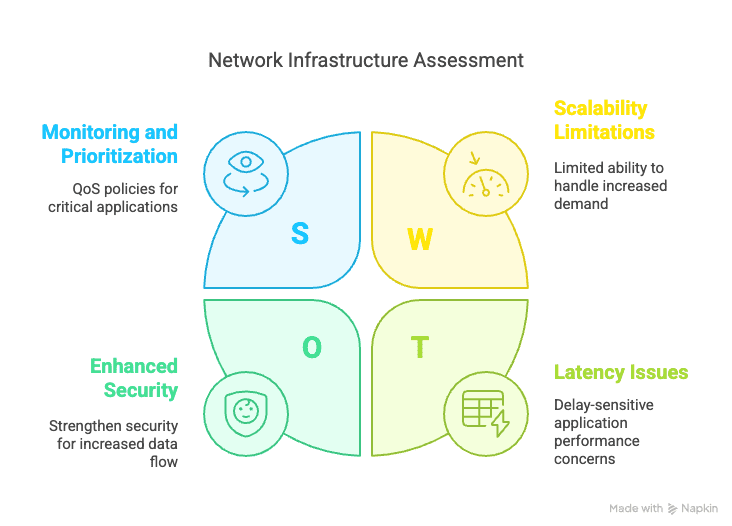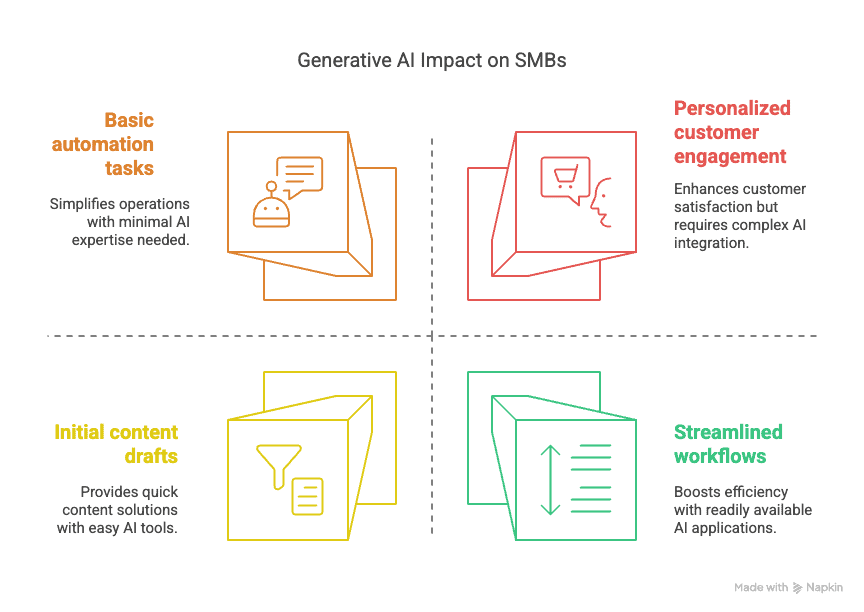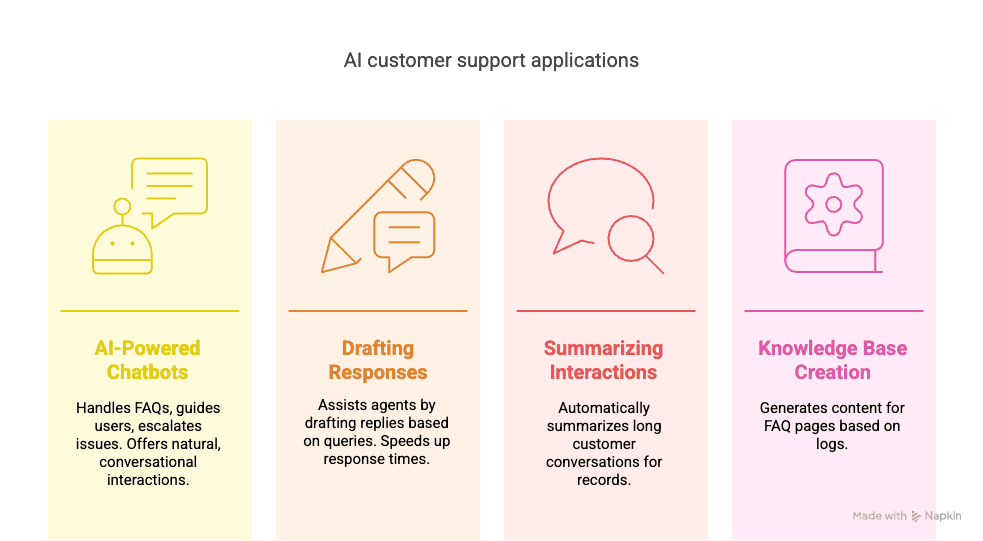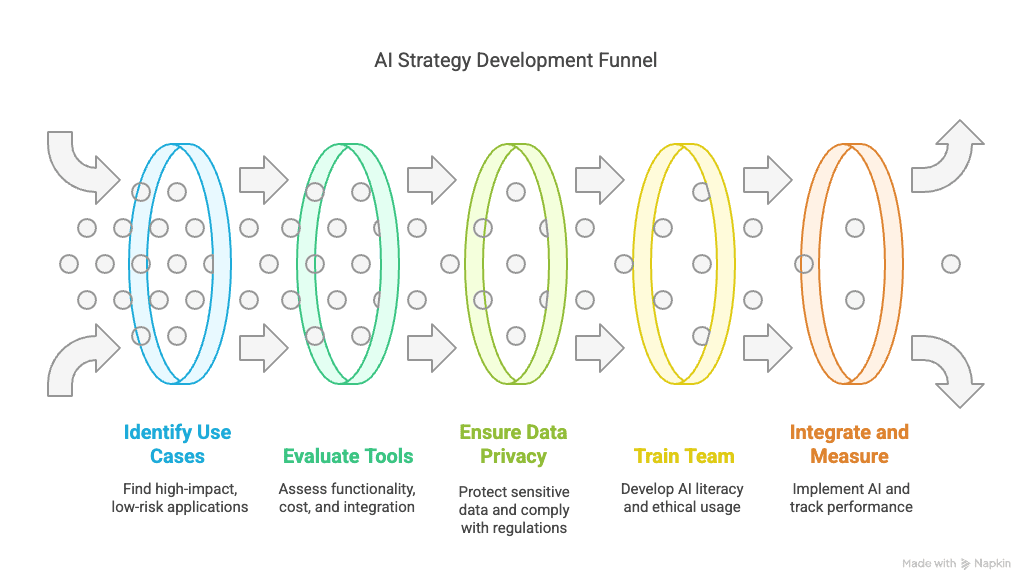The conversation around Artificial Intelligence (AI) has moved from futuristic speculation to practical business application. Across industries, companies are exploring how AI can enhance efficiency, unlock new insights, and create better customer experiences. It’s an exciting time, filled with potential. However, as we embrace these powerful new tools, a foundational element often gets overlooked until it becomes a bottleneck: the business network.
While your current network might handle today’s operational demands adeptly, AI introduces a new class of requirements. It’s not always about a sudden, dramatic surge but often a subtle yet persistent increase in demands for speed, capacity, and responsiveness. Many business leaders and IT professionals should consider: Is our existing network infrastructure ready for what AI will ask of it?
This isn't a cause for alarm but an invitation for thoughtful preparation. Understanding how AI interacts with your network is the first step toward ensuring your business can harness its full potential without being hindered by an underprepared infrastructure. Let's explore AI's nuanced demands on your network and what strategic considerations can help you build a resilient, AI-ready foundation.
Key Takeaways:
| Aspect Explored | Vital Insight for Your Business |
| AI's Subtle Network Strain | Artificial Intelligence isn't just software; its adoption quietly escalates demands on your network's data capacity and speed. |
| The Data & Latency Equation | Success with AI (from analytics to real-time responses) hinges on a network that can handle vast data flows with minimal delay. |
| Infrastructure Foresight | Proactively evaluating your current network against projected AI needs is crucial to prevent future performance issues. |
| Targeted Network Enhancements | Focus on strategic upgrades: robust bandwidth (think multi-gig/fiber), modern Wi-Fi for low latency, and smart traffic management (QoS). |
| AI-Readiness as a Journey | Preparing your network is an ongoing, adaptive process. Plan for scalable solutions that evolve with your AI strategy. |
| Beyond Speed: Holistic Design | An AI-ready network also considers new traffic patterns, the demands of IoT/Edge AI, and maintains robust security. |
The Quiet Network Demands of AI: More Than Meets the Eye
Artificial Intelligence isn't a single entity; it's a spectrum of applications, from data analytics and machine learning to generative AI and real-time automation. Each of these interacts with and relies upon your network in its own way. Often, these demands are less about a single, overwhelming load and more about consistent, high-level performance needs that can cumulatively strain a standard business network.
The Unseen Data Deluge: AI's Appetite for Bandwidth
AI's most significant impact on a network is its sheer data consumption.
- AI Model Training: Developing and refining AI models requires processing enormous datasets, especially in machine learning and deep learning. While much of this might occur on specialized servers or in the cloud, the movement of this data to and from storage and between processing units traverses your network's parts.
- Real-Time Analytics: AI-powered business intelligence tools constantly ingest data from myriad sources, such as customer interactions, IoT sensors, financial transactions, and market feeds. This continuous flow requires substantial bandwidth to ensure timely insights.
- Generative AI Content: Tools that create text, images, audio, or even video based on prompts are becoming increasingly common. While a single text query might be small, widespread use across an organization or the generation of rich media multiplies this demand significantly. For instance, a recent study highlighted that a significant percentage of IT leaders (around 69%, according to a 2024 Sandvine report) are already concerned that their current network infrastructure may not have the capacity for emerging generative AI demands.
A network that’s merely “adequate” for current file sharing and email might struggle when AI applications begin to consistently move large volumes of data, leading to slower performance for all connected users and systems.
When Every Millisecond Counts: AI's Need for Low Latency
Latency, in network terms, is the delay in data transfer. For many traditional business applications, a slight delay might go unnoticed. However, for a growing number of AI applications, low latency isn't just desirable—it's critical.
- Real-Time Decision Making: Consider AI applications like automated fraud detection systems that must identify and flag suspicious transactions in milliseconds. Or think of AI-powered robotic systems in a manufacturing or logistics environment where immediate responses are vital for safety and efficiency.
- Interactive AI: Customer service chatbots, especially those using voice recognition and natural language processing, require very low latency to provide a smooth, natural-feeling interaction. Excessive delays lead to frustrating user experiences.
- Operational AI: In sectors like healthcare, AI might monitor patient vitals in real-time, requiring immediate data transmission for alerts. In finance, algorithmic trading relies on split-second data processing.
If your network introduces even minor delays, the efficacy of these AI tools can be severely compromised. Standard networks, not always optimized for such rapid response times, can become a point of failure.
New Routes for Information: Complex AI Traffic Patterns
Traditional network traffic in many businesses has followed relatively predictable paths, often a “north-south” pattern (client to server, or internal network to the internet). AI is changing this landscape.
- Distributed Architectures: AI applications often leverage a mix of on-premise servers, cloud platforms, and edge computing devices. This creates more complex “east-west” traffic patterns (server-to-server, device-to-device within the network or across data centers) that your network needs to handle efficiently.
- Bursty Workloads: AI processing can sometimes be “bursty,” meaning it requires very high bandwidth or processing power for short, intense periods, followed by lulls. A network not designed for such dynamic loads might struggle to allocate resources effectively, leading to temporary bottlenecks.
- Microservices and APIs: Modern AI applications are often built using microservices that communicate via APIs. This means many small, frequent data exchanges across the network, which require efficient handling of numerous concurrent connections.
Understanding these evolving traffic patterns is crucial for preventing congestion and ensuring smooth data flow for all AI-driven processes.
The Edge and Beyond: IoT and AI Synergy
The Internet of Things (IoT) and AI are increasingly intertwined. Businesses are deploying vast arrays of sensors and smart devices that collect data, which AI then analyzes to provide insights or trigger actions. This synergy has distinct network implications.
- Device Proliferation: Each IoT device is a network endpoint. A large-scale deployment can mean hundreds or thousands of new devices requiring connectivity, IP addresses, and management.
- Edge AI Processing: To reduce latency and bandwidth consumption on the central network, some AI processing is done at the “edge”—on or near the device generating the data. While this is beneficial, it doesn’t eliminate network traffic. Processed data, summaries, critical alerts, or data for further model training still need to be transmitted. A substantial portion of data processing is anticipated to shift to the edge in the coming years.
- Data Aggregation and Backhaul: The data collected and partially processed by edge devices eventually needs to be aggregated and often sent to a central data repository or cloud platform for more comprehensive analysis or long-term storage, requiring reliable uplink capacity.
The integration of IoT and AI means your network must support not just more devices, but also diverse types of data flow originating from these new sources.
Assessing Your Current Network: A Gentle Reality Check
Before considering any changes, it’s wise to conduct a calm, objective assessment of your current network infrastructure in light of these potential AI demands. This isn't about finding fault but identifying areas for proactive improvement.

Key Questions to Ask About Your Network:
Here are some questions to guide your internal review or discussions with your IT team or a trusted technology partner:
- Current Bandwidth Utilization: What is our typical internal (LAN) and external (internet) bandwidth usage? Do we experience periods where it’s consistently near maximum capacity? How much headroom do we realistically have?
- Latency Performance: How does our network currently perform with applications that are sensitive to delays? Are there existing complaints about lag with video conferencing, VoIP, or cloud applications?
- Infrastructure Age and Standards: Are our core switches, routers, and wireless access points using relatively current technology and standards (e.g., Wi-Fi 6/6E, multi-gigabit Ethernet)? Older hardware can be a significant bottleneck.
- Scalability: If our data processing and transfer needs doubled in the next 18-24 months due to AI adoption, how easily could our current network scale to meet that demand? What would be involved?
- Traffic Management and Prioritization: Do we have Quality of Service (QoS) policies in place? How do we currently prioritize critical application traffic over less essential data flows?
- Network Monitoring: What tools and processes do we have for monitoring network performance, identifying bottlenecks, and proactively planning capacity upgrades?
- Security Posture: With increased data flow and potentially more connected devices, how robust is our current network security? Are we prepared for new potential vulnerabilities AI might introduce or exploit?
Answering these questions honestly will clarify your network’s AI readiness and highlight areas that may need strategic attention.
Building an AI-Ready Network: Strategic Upgrades and Considerations
If your assessment suggests that your current network might struggle with AI's demands, the next step is to plan strategically. Building an AI-ready network is about making smart, incremental improvements that align with your business goals and AI adoption roadmap.
Bandwidth: The Foundation of AI Performance
Since AI thrives on data, ensuring sufficient bandwidth is paramount.
- Wired Infrastructure: For critical systems and high-demand workstations, consider upgrading to multi-gigabit Ethernet (2.5 Gbps, 5 Gbps, or 10 Gbps) where appropriate. Fiber optic cabling offers even greater capacity and is increasingly viable for backbone connections and direct-to-server or high-performance workstation links.
- Internet Uplink: As more AI services are cloud-based, a robust, high-speed, and reliable internet connection with adequate upload and download speeds becomes even more crucial. Evaluate your current plan and consider dedicated internet access (DIA) or redundant connections for business continuity.
Latency: Ensuring Real-Time Responsiveness
For AI applications where timing is everything, minimizing latency is key.
- Modern Wi-Fi: Upgrading to the latest Wi-Fi standards (like Wi-Fi 6, 6E, or Wi-Fi 7) can significantly improve wireless performance, reduce latency, and better handle a higher density of connected devices. Proper placement and configuration of access points are also vital.
- High-Quality Network Hardware: Modern switches and routers designed for business use offer better processing power, memory, and advanced features that contribute to lower latency and more efficient data handling.
- Quality of Service (QoS): Implementing (or refining) QoS policies allows your network to prioritize traffic from critical AI applications over less time-sensitive data. This ensures that your most important AI tools get the network resources they need, when they need them.
Designing for Flexibility and Scale
AI adoption is often an evolving journey. Your network should be able to adapt and grow alongside your business's AI capabilities.
- Network Segmentation: Dividing your network into smaller, isolated segments (VLANs) can improve security and performance. For instance, you might create a separate segment for high-demand AI processing workloads or sensitive IoT devices.
- Software-Defined Networking (SD-WAN): For businesses with multiple locations or significant cloud usage, SD-WAN can offer more intelligent and dynamic traffic routing. It can automatically optimize paths for AI applications, improve cloud service performance, and simplify network management.
- Modular Design: When upgrading, consider modularity. Choose solutions that allow you to scale capacity or add new features without completely overhauling the existing infrastructure.
Don't Forget Security in Your AI Network Plan
With more data flowing and potentially new types of devices connecting, maintaining robust network security is non-negotiable.
- Data Protection: Ensure that the sensitive data used by AI systems is encrypted in transit across your network and at rest in storage.
- Access Control: Implement strong access controls to ensure only authorized users and systems can interact with AI applications and their data.
- Threat Detection: Consider how AI itself might introduce new security considerations, and ensure your security tools and practices are equipped to monitor and protect against evolving threats targeting AI systems or leveraging AI for attacks.
The Journey to AI Readiness: A Measured Approach
Preparing your network for the AI revolution isn't about an immediate, costly overhaul. It’s about understanding the potential impacts, assessing your current capabilities, and making informed, strategic decisions that align with your overall business and technology roadmap.
Start by fostering a conversation within your organization. Involve your IT team, department heads who are considering AI tools, and potentially external experts who can provide an objective perspective. A phased approach, prioritizing upgrades based on the most immediate and impactful AI initiatives, is often the most practical path.
By taking these measured steps, you can ensure that your network is a powerful enabler of your AI ambitions, rather than an unseen barrier. A well-prepared infrastructure will allow your business to confidently explore and deploy AI innovations, unlocking new efficiencies and opportunities for growth in the years to come.
Ready to discuss your network's AI readiness? Contact iFeeltech today for a consultation.


